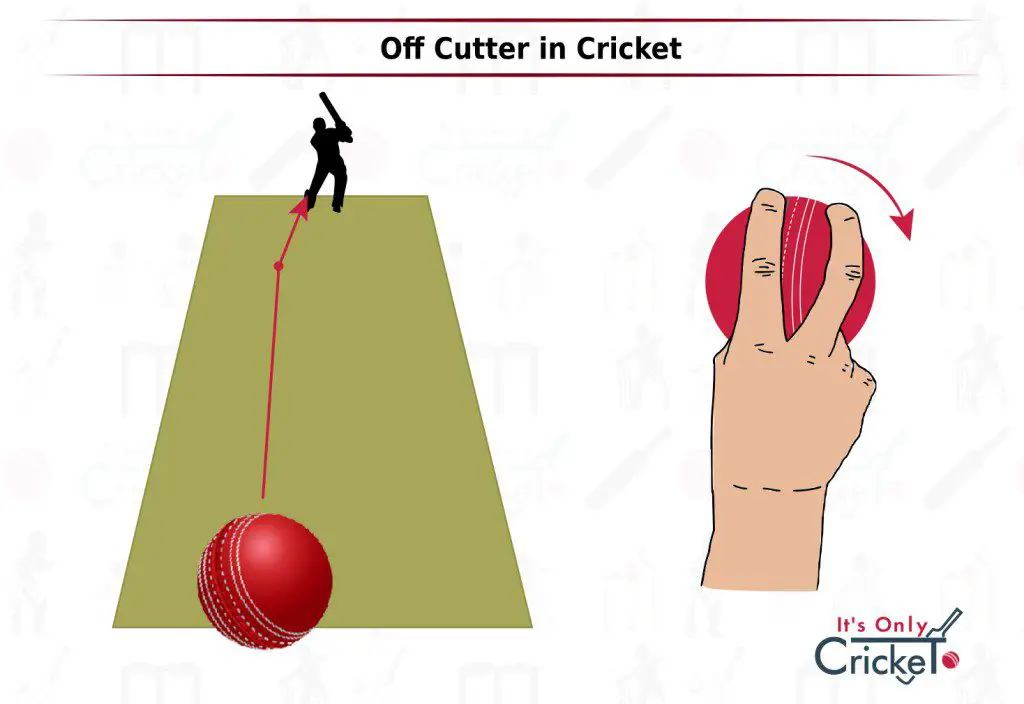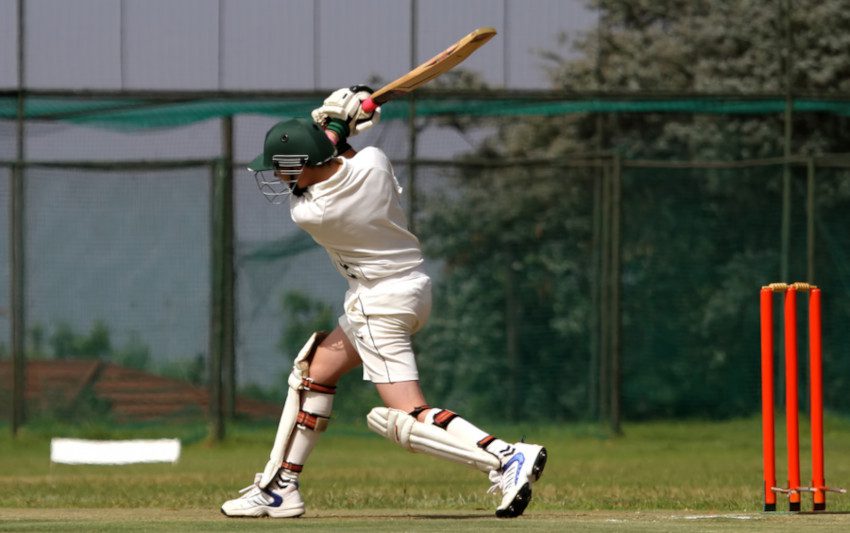Table of Contents
One of the many variations in a seam bowler’s armoury is the off cutter. In this article, we’re going to look at what it does and how to bowl it effectively.
What is an Off Cutter in Cricket?
An off cutter is a type of cricket delivery which is bowled by seam and pace bowlers. If a right arm bowler is delivering to a right handed batter, the intention is for the ball to turn from the off side to the leg side.
The deviation isn’t as prodigious as an off spinner’s standard off break, but the deviation can be difficult for the batter to deal with.
How to Bowl an Off Cutter?
Off Cutter Grip
The grip is similar to that of a standard outswing delivery. The index finger will be placed on the seam, while the middle finger will be split and just to the side of it.
The thumb is placed below the seam and this helps with a firm grip.

Releasing the Ball
Don’t change anything relating to your run up. We want the batter to think that a conventional delivery is coming.
The difference comes at the point of release where we ‘turn’ the ball as if we were turning a door knob. The index finger rotates in a clockwise direction and this is intended to impart that spin on the point of release.
Where to Pitch the Off Cutter?
If you’re bowling a right arm delivery to a right handed batter, the ideal off cutter would pitch on or just outside of the off stump. This would tempt the batter into playing a shot without expecting the turn which will hopefully follow.
I would suggest that the perfect off cutter lands just outside of the off stump to a right hander. They are tempted into the drive and they leave a gap between the bat and the pad. If there is turn, the ball can deviate, moving ‘between the gate’ and crashing into the stumps.
This type of delivery will also bring LBW into play. If the ball is on or outside of the off stump, it can still hit any of the three stumps if there is turn.
If pitched on middle stump or leg stump, the turn should see the ball head down the leg side. This means that the batter is unlikely to be out even if they miss the ball.
We’ve talked about line, but bowlers should also be considering the length of the off cutter delivery. The ideal spot would be on a good length which would tempt the batter into playing an off drive. This would leave a bigger gap between bat and pad which the ball could travel through.
A slower, off cutter yorker can also be worth trying. The spin and the slow release can mean that the batter will lose the ball in the flight. If executed properly, there is a definite chance of that ball crashing into the stumps.
A short of a length off cutter may not be quite so useful, but a lot of bowlers will attempt the slow, off cutting bouncer.
Factors to Consider
Another factor to take into account is the condition of the pitch. As a faster bowler, you may find that there is no help to your standard swing or seam deliveries. When that happens, it can be a good idea to test the cutters to see if there is any turn.
If that pitch is helping the spinners, it may also help your cutters to deviate. Remember, the turn won’t be as pronounced for the faster bowlers, but a spinning pitch should always help.
The off cutter can also be a useful weapon if the pitch is low and slow. If the ball isn’t coming onto the bat, pace isn’t always the best option as the batter has more time to play the ball.
Off cutters can get stuck in the pitch and this is when the batting side has most problems regarding timing.
Cutters will often be used in limited overs cricket. If the batting team is looking to slog, the slower pace and the turn can be difficult to counteract. The slower ball bouncer can be especially useful in this situation, but be careful on height as wides are called more frequently in the limited overs formats.
Conclusion
While an off cutter shouldn’t impart as much spin as a traditional off spinner’s off break, the speed is an important factor here. If a seam bowler sends the ball down with any great pace, the slightest deviation can cause problems for the batter.
An off cutter can also grip on the surface if the conditions are right. With the ball having a tendency to ‘stick’ in the pitch, it makes it very hard for the batter to time their shots. All of this means that the off cutter is a very useful delivery and, if you are a quicker bowler, it’s definitely worth looking to perfect this in the nets.


